Smyrna Airport (MQY)
Smyrna Airport (MQY) is a joint use airport located ten miles southeast of the larger Nashville International Airport. While predominantly supporting general aviation this is a joint use facility with the Tennessee Army National Guard Unit which operates 60 helicopters. View a printable Pilot Handbook of the MQY information found on this Web page.
Know Before You Go
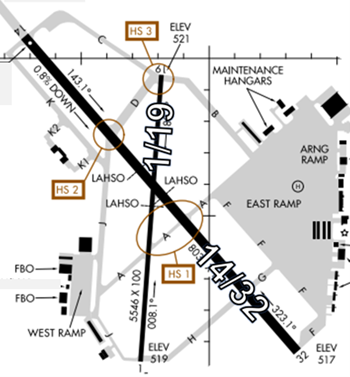 The RWY configuration consists of intersecting RWYs 1/19 and 14/32.
The RWY configuration consists of intersecting RWYs 1/19 and 14/32.
The airspace at MQY is Class D and underlies Nashville Class C airspace. (Refer to Sectional Chart)
BNA airport traffic transits MQY airspace at 2500 MSL and above.
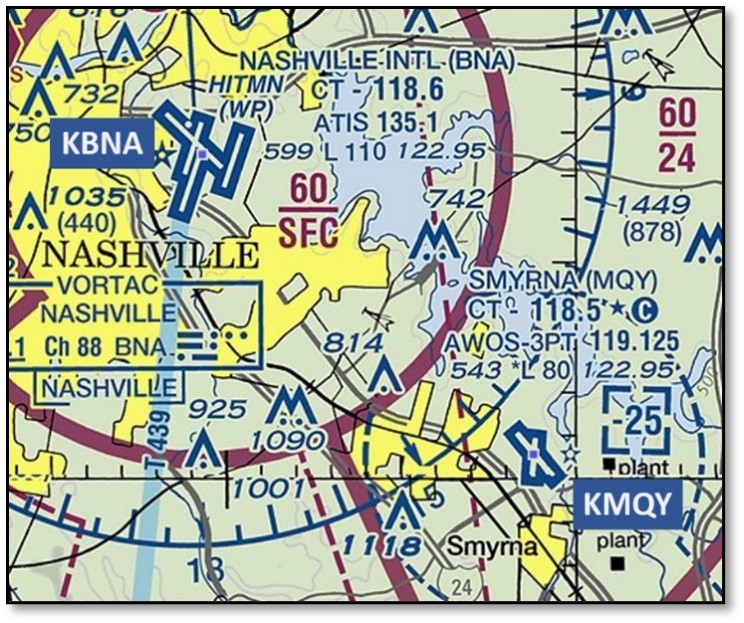
MQY ATCT Hours: 0700L-2200L M-F
700L-1900L S-S
Administrative Office Open 0800L-1600L M-F
Business Phone 615-355-9610
Below find various MQY-specific information and things to be aware of, as well as general information to inform your preflight planning. This will be reviewed quarterly and updated as needed. This information is to supplement the From the Flight Deck Videos that are produced by the FAA Runway Safety Group. Here you will also find information provided by the local air traffic controllers at the airport where you intend to fly. The information is subject to change. Not for navigation or legal* pre-flight action. Always refer to official pre-flight materials such as, but not limited to, NOTAMs, airport diagrams, VFR charts and airport construction notices for the latest airport-specific details.
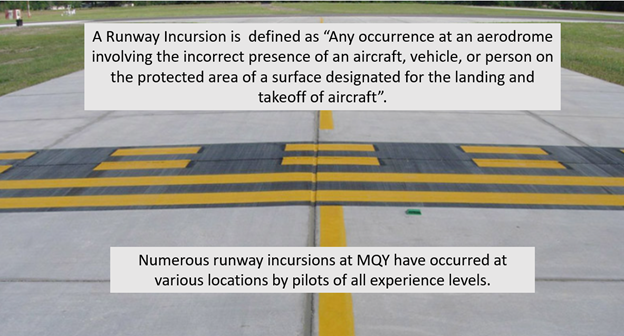
Hot Spots
HS 1 Maintain vigilance direct access from ramps to both RWYs and high-volume operations.
- Aircraft exiting RWY 19 at TWY A for the east ramp have taxied across RWY 14/32 without clearance
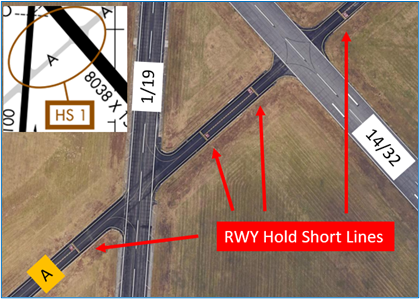
HS 2 Maintain vigilance high volume operations.
- Numerous aircraft taxiing inbound and outbound in this area. Listen carefully to ATC instructions. If ever in doubt about your position or instructions, ask the TWR.
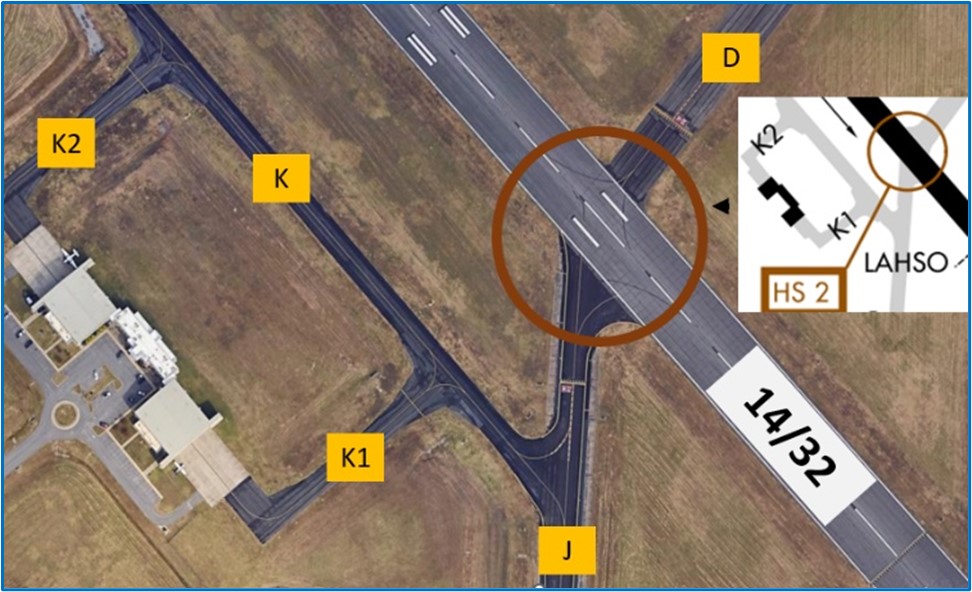
HS 3 Maintain vigilance Hold Short Lines further back than expected.
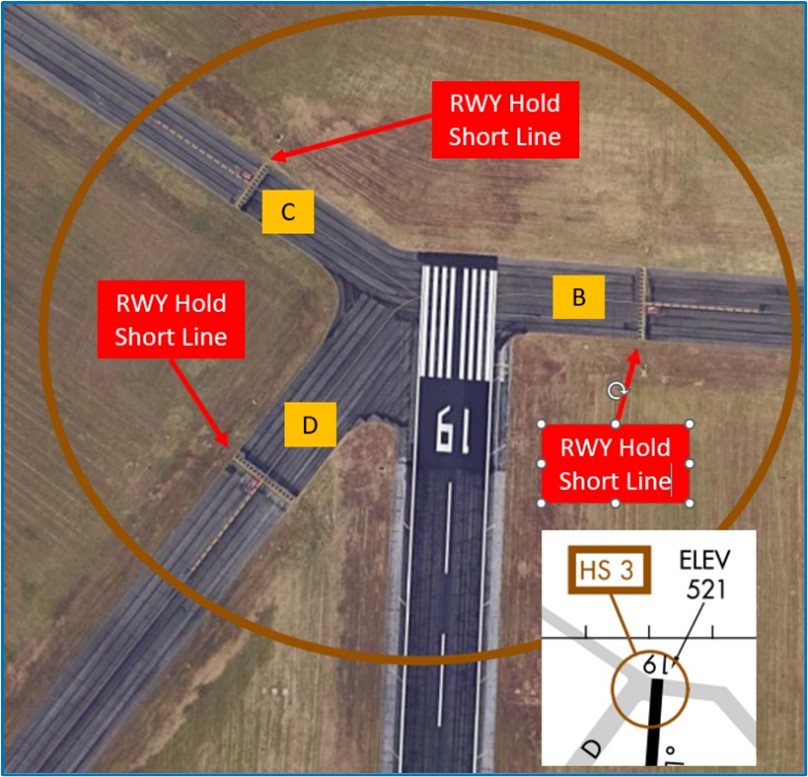
- Aircraft taxiing to RWY 19 on TWY D have missed the RWY Hold Short Markings and Signage and taxied onto the RWY. Above ground RWY Guard Lights (wig-wag lights) have been installed to assist pilots in holding short of RWY 19. (See below)
- Holding short of a RWY at the appropriate location is essential. Know when and where to hold short.
- View From the Flight Deck – Hold Short for tips and recommendations.

- Pilots are encouraged to review NOTAMS Letter to Airmen LTA-MQY-1 “Runway Incursion” for facility issued guidance.
Landing
- Aircraft approaching MQY from the northeast have misidentified TWY A or RWY 14 for RWY 19. TWY A was formerly a RWY which may explain the error.
- View From the Flight Deck – Wrong Surface Landings for tips and mitigation strategies.
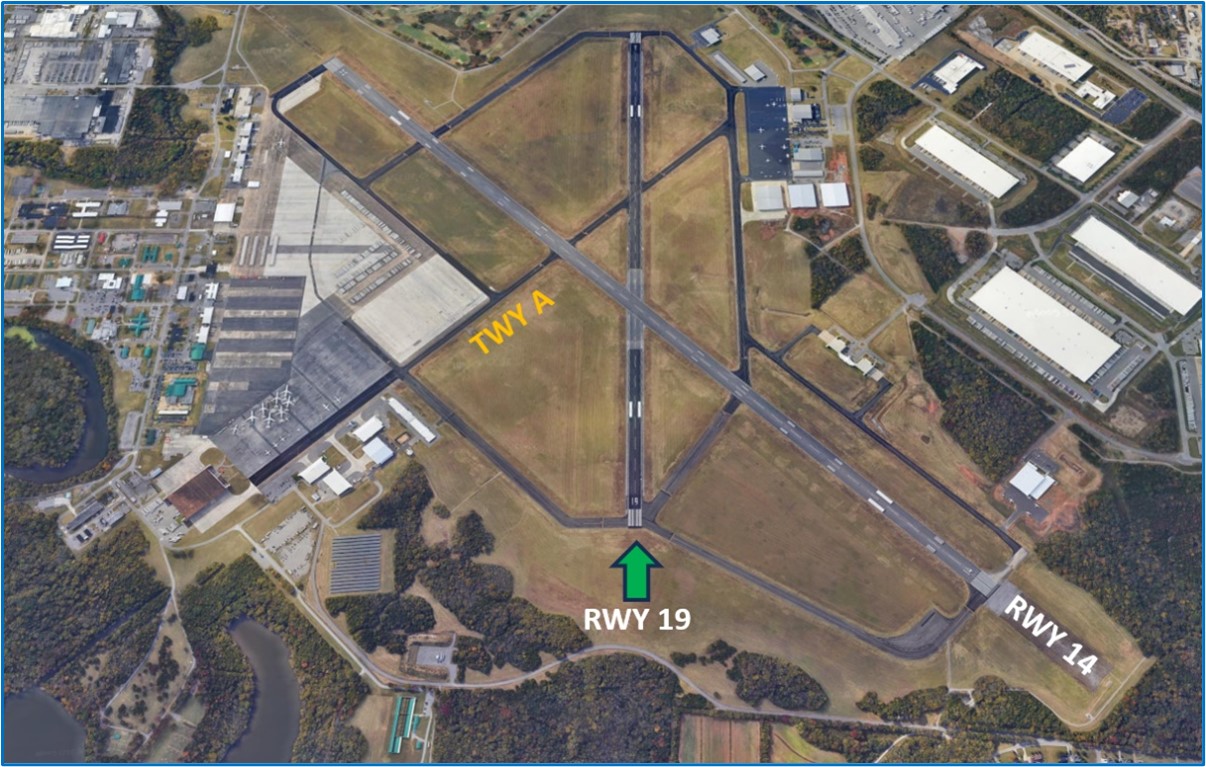
Traffic Pattern
- For closed traffic, TWR normally utilizes right traffic for RWYs 14 and 19, although pattern direction may be adjusted to accommodate inbound aircraft.
- Inbound aircraft will normally be sent to the most direct pattern entry point from where the aircraft is located.
- Occasionally a less direct route will be utilized to increase spacing during busy periods.
Ground
- Read back all hold short instructions including aircraft call sign.
Takeoff/Departure
- IFR/VFR Flight Following departures will normally be assigned runway heading off runway 19, and heading 090 for all other runways, regardless of on course heading. This is to avoid the Nashville departure and arrival areas near Smyrna airport.
- Verify proper heading prior to starting takeoff roll on all intersection departures.
Arrival/Landing
- When approaching from an Easterly direction for a runway 19 arrival, take care not to fly through the final. There are routinely several aircraft on the right downwind. Flying through the final from the East places will place your aircraft extremely close to aircraft on the downwind.
- Upon landing, exit the runway without delay at the first available taxiway.
- Before stopping for post landing checklist, taxi far enough past the hold lines to allow aircraft to clear the runway behind you.
- The NASCAR Speedway 6 Northeast, the Rock Quarry 4 East, and the Nissan Automobile Plant 3 Southeast are common VFR reporting points.
- MQY TWR utilizes Land and Hold Short (LAHSO).
LDG RWY HOLD-SHORT POINT AVBL LDG DIST
RWY 01 14/32 3000
RWY 14 01/19 3391
RWY 32 01/19 3950
Special Traffic (Military / Commercial / Helicopter, etc.)
- This is a joint use facility with the Tennessee Army National Guard Unit which operates 60 helicopters.
- Large volume of army helicopters transitioning just outside the northern boundary of the MQY Class D airspace to and from Nashville International Airport (BNA) at approximately 1,500’ MSL.
